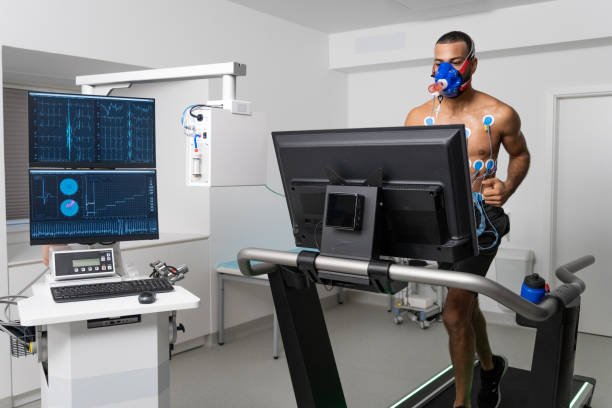
Feel Dizzy When You Stand Up From a Squat? Definition, Causes, And Treatment of Postural Hypotension
Mary would feel dizzy whenever she squatted or stood up, and sometimes her vision would be blurred. After going to the hospital for examination, the doctor said it was “postural hypotension.” What exactly is postural hypotension? How should postural hypotension be treated and improved? This article gives you an in-depth explanation!
What is postural hypotension?
Postural hypotension (Orthostatic hypotension or Postural hypotension) is also called orthostatic hypotension, orthostatic hypotension, and postural hypotension. Refers to symptoms of hypotension caused by changes in posture, such as: suddenness when squatting and standing up, dizziness when sitting and standing up.
Generally, hypotension is defined as systolic blood pressure <90mmHg and diastolic blood pressure <60mmHg, while postural hypotension refers to a drop in systolic blood pressure of >20% and a drop in diastolic blood pressure of >10% within 3 minutes of standing.
Causes of postural hypotension
In most cases, when the human body changes posture, the baroreflex receptors located in the aortic arch and carotid sinus will send signals to the autonomic nerves to increase vascular resistance or accelerate the heart beat to control blood pressure within the average value. But when this mechanism for controlling blood pressure is affected, hypotension may occur.
Another main cause is that the blood volume from the human body is reduced or the circulation is affected, which may also cause hypotension. Risk factors for both conditions will be listed later in this article.
Symptoms of postural hypotension
Common symptoms of postural hypotension are as follows:
- Dizziness when standing up after squatting down
- Headache
- blurred vision
- weak
- syncope
- Confused
- nausea
When should you seek medical attention for postural hypotension?
If you only feel dizzy or dizzy “occasionally”, it may be caused by factors such as mild dehydration, hypoglycemia, staying in an overheated environment, or getting up after sitting for a long time. It is usually not a serious health problem, but if If you often experience symptoms of postural hypotension after standing up, it may be a sign of other serious diseases. If symptoms are severe enough to cause loss of consciousness, even for just a few seconds, the situation may be quite critical, so it is important to seek medical attention as soon as possible.
You can record the occurrence of postural hypotension, such as how long the symptoms lasted, what you were doing at the moment, etc., so that you can discuss it with your doctor when you see a doctor.
7 major risk factors for postural hypotension
There are many possible factors that may cause postural hypotension, one of which is particularly common is insufficient circulating blood volume, which may be caused by body dehydration, blood loss or anemia. (Recommended reading: Sudden hypotension is dangerous! There are many causes of hypotension, so be careful)
When the number of red blood cells carrying oxygen in the human body decreases, symptoms such as dizziness and dizziness may occur. Other risk factors are as follows:
- Age 65 and over:
The function of the baroreflex receptors weakens with age, and the heart beats slower in older people and the blood supply rate also slows down. - Drug effects:
including high blood pressure drugs, heart disease drugs, such as diuretics, beta-blockers (β-blockers). In addition, Parkinson’s disease drugs, antidepressants, antipsychotics, muscle relaxants, erectile dysfunction drugs, anesthetics, etc., may also increase the risk of postural hypotension. - Patients with specific diseases:
including heart diseases, such as heart valve disease, myocardial infarction, and heart failure; neurological diseases, such as Parkinson’s disease; and diseases causing neuropathy, such as diabetes. - Being in a high temperature environment for a long time:
Staying in a high temperature environment will cause a lot of sweating, which may lead to dehydration and even postural hypotension. - Staying in bed for a long time:
People who have not left bed for a long time due to illness are very weak and prone to postural hypotension when they stand up. - Pregnancy:
Because weight increases during pregnancy and blood elasticity and backflow deteriorate, blood pressure may drop. However, postpartum blood pressure usually returns to the state before delivery. - Alcohol:
Alcohol can temporarily inhibit sympathetic nerves and dilate blood vessels, thereby increasing the risk of postural hypotension.

5 tests to diagnose postural hypotension
The doctor will first review the patient’s medical history and, if necessary, arrange further examinations to determine whether there are other underlying factors or diseases causing the hypotension symptoms. For example, if a drop in blood pressure is caused by taking a specific medication, the doctor may adjust the dosage or recommend a different medication. The following are possible inspection methods:
- Tilt table test:
detects changes in blood pressure when the patient changes posture. In this test, the patient first needs to lie flat on the examination table for a few minutes, and then the medical staff will slowly raise the bed. - Blood tests:
Check whether the patient’s blood sugar or red blood cell count is low (both signs of hypotension). - Electrocardiogram (ECG or EKG for short):
Observe the electrocardiogram signal to confirm whether there are problems such as arrhythmia, insufficient oxygen supply or blood supply. - Echocardiogram:
Use ultrasound to observe the activity of the heart valves to confirm whether there is any underlying disease. - Stress test:
Patients can use a treadmill to measure their blood pressure during exercise. If necessary, they can also use specific drugs to accelerate their heart rate to achieve the same effect for easy observation.

How is postural hypotension treated?
To treat postural hypotension, the first goal is to restore normal blood pressure, which includes increasing blood volume, reducing blood pooling in the lower extremities, and increasing blood circulation throughout the body. Often treatment does not focus on the symptoms themselves, but rather on addressing the underlying causes of low blood pressure, such as dehydration, abnormal heart function, etc.
If it is only mild postural hypotension, the simplest treatment is to sit down or lie down to rest immediately if you feel dizzy after standing up. The symptoms will usually improve immediately. As for drug-induced hypotension, doctors usually recommend changing the drug dose or stopping the drug. The following are treatments for postural hypotension:
Non-pharmacological treatment
The doctor may advise you to adjust your living habits, including taking in enough fluids, drinking less or no alcohol, avoiding overheated environments, raising pillows when sleeping, trying not to cross your feet when sitting, slowing down when getting up, etc.
If you don’t have high blood pressure, your doctor may recommend increasing your salt intake. If your blood sugar drops after a meal, your doctor may recommend that you eat a small, low-sugar diet and wear elastic stockings, corsets and other clothing, which may help reduce blood accumulation in the legs, thereby improving postural hypotension.
Medical treatment
Certain medications may also help improve postural hypotension, such as:
- Mineral corticosteroids:
such as Fludrocortisone, increase sodium and fluid retention in the blood to raise blood pressure. - Sympathomimetic drugs:
such as Midodrine, inhibit vasodilation and increase blood pressure. - Parasympathomimetic stimulant drugs:
such as Pyridostigmine, which can improve the baroreflex (blood pressure reflex) and enhance the ability of the autonomic nervous system to regulate blood pressure. - Droxidopa:
Doctors may prescribe this drug if low blood pressure is caused by Parkinson’s disease, multiple system atrophy (MSA), or an autonomic disorder. - Erythropoietin:
Increases the quality and volume of red blood cells and improves blood viscosity.

If the patient’s symptoms cannot be improved through lifestyle modification or the above-mentioned drugs, he may need to be treated with other drugs such as non-steroidal anti-inflammatory drugs (NSAIDs), desmopressin, and somatostatin.
8 ways to improve postural hypotension
The following 8 methods can help improve postural hypotension:
Diet part
- Increase your salt intake:
Please note that this approach may not be suitable for everyone. Too much salt intake can be counterproductive, causing excessive increases in blood pressure and causing other health problems. If you want to increase your salt intake, be sure to discuss it with your doctor first and consider the serving size. - Eat a small amount:
If your blood sugar drops after a meal, your doctor may recommend eating a small amount that is low in sugar. - Vitamin supplement:
Anemia and lack of vitamin B12 may make postural hypotension more serious, so patients with hypotension can also take appropriate iron and vitamin supplements, which may help improve symptoms. - Stay hydrated:
Hypotension can be prevented by staying hydrated. If you need to stand for a long time or engage in any activity that may cause low blood pressure, it is recommended that you drink enough water beforehand. - Avoid drinking alcohol:
Alcohol may worsen the symptoms of postural hypotension, so please reduce or quit drinking.
Living habit
- Maintain exercise habits:
A combination of aerobic and weight training can help improve postural hypotension, but please avoid exercising in extremely hot and humid weather or environments. - The bath water temperature should not be too hot:
higher water temperature will dilate blood vessels and increase the chance of hypotension. - Avoid bending:
If you want to pick up items from the floor, squat with your knees instead of bending to reduce the risk of hypotension. - Wear elastic stockings:
Elastic stockings may help improve blood circulation and improve postural hypotension. You can wear it during the day, but remember to take it off before going to bed or when lying down. - Get up slowly:
When changing from lying to sitting, try to get up slowly to reduce the dizziness caused by postural hypotension. In addition, it is recommended that you do not get up in a hurry when you get up. You can sit on the edge of the bed for 1 minute to calm down your blood pressure. - Elevate your pillow:
Raising your pillow slightly while sleeping can help fight gravity. - Move your feet more when standing:
If you suddenly experience symptoms of low blood pressure while standing, you can try crossing your feet, squeezing them hard, or lifting one foot on a window sill or chair, and leaning forward as much as possible. This action can help Helps promote blood flow back from the feet to the heart.












